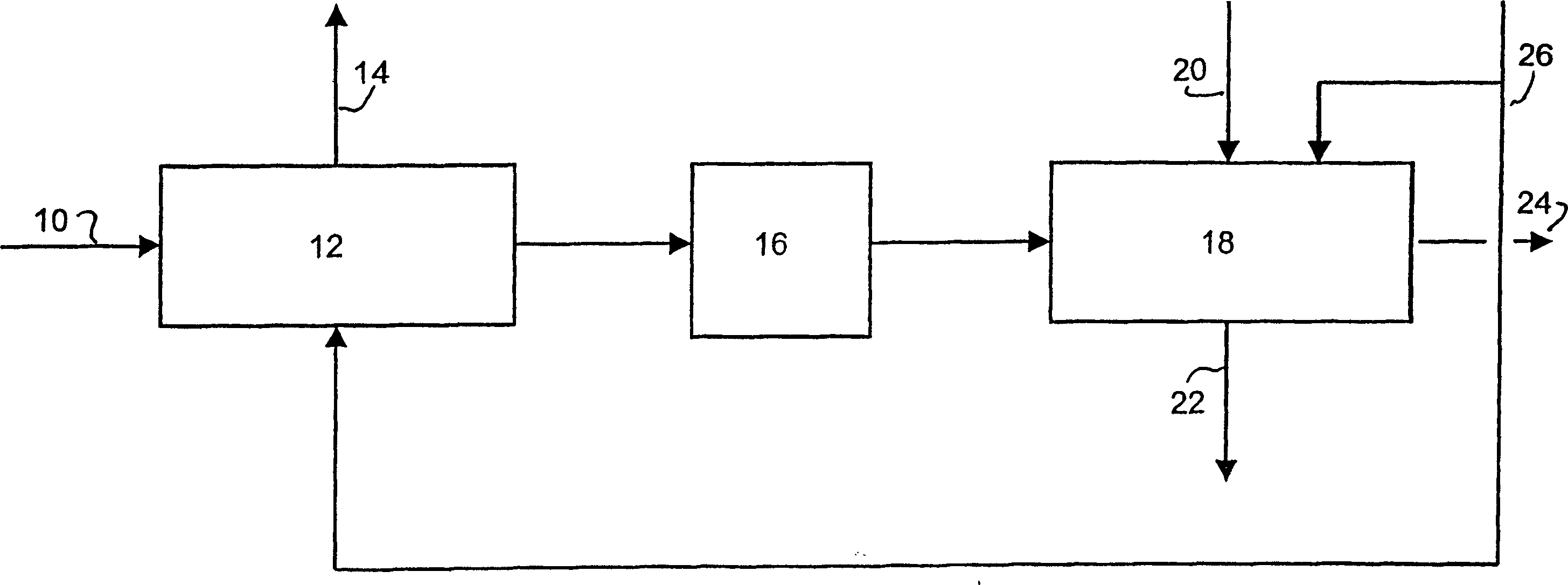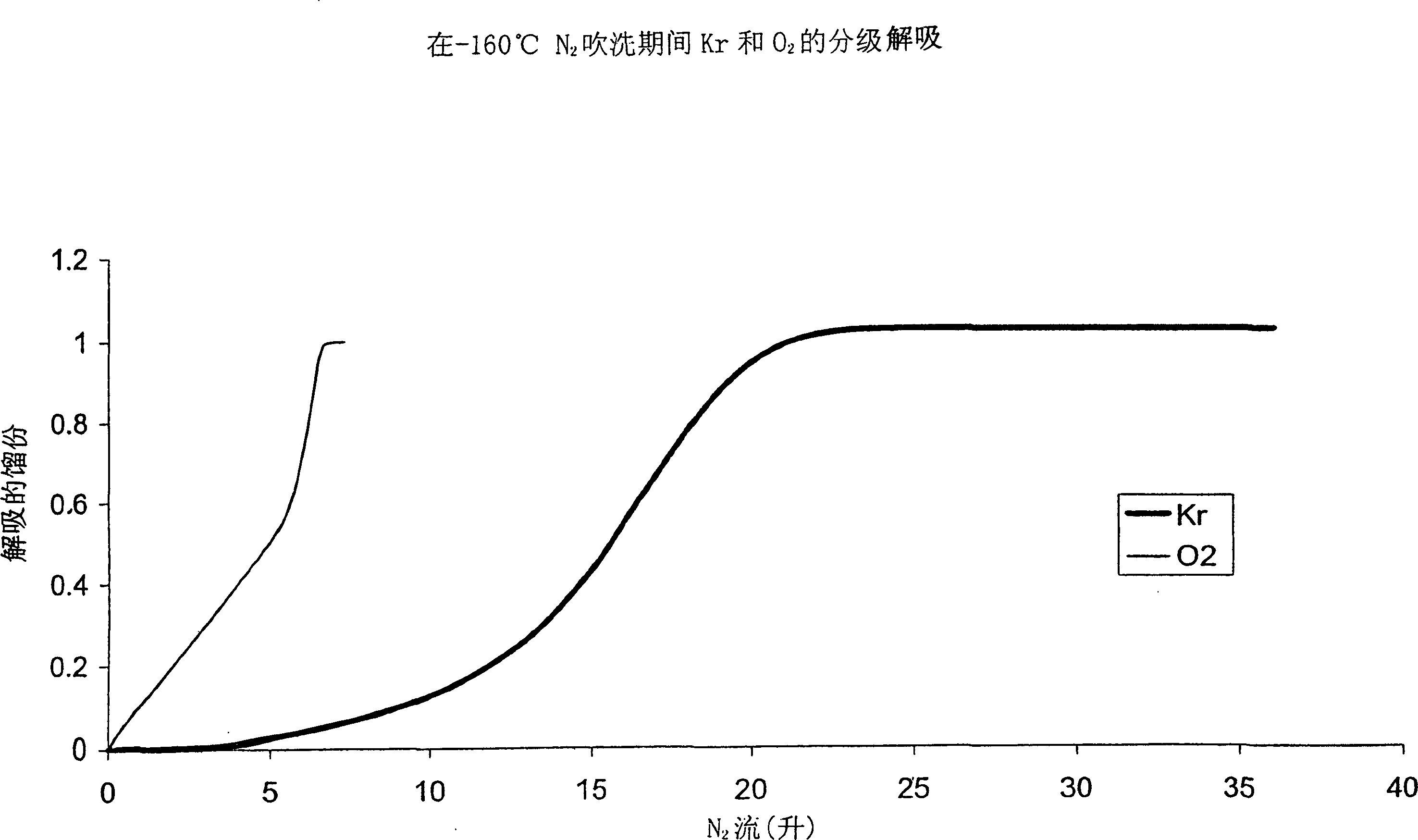Method and adsorbent for recovering kryptsn and xenon from gas stream or liquid stream
An adsorbent and adsorbent bed technology, applied in the field of devices for adsorption methods, can solve the problems of low selectivity and the like
- Summary
- Abstract
- Description
- Claims
- Application Information
AI Technical Summary
Problems solved by technology
Method used
Image
Examples
Embodiment 1
[0080] Adsorption isotherms of oxygen and xenon were measured at 30°C on silica gel, 13X and 20% AgLiLSX. The results are presented in Table 1, which gives the Henry's Law constants (initial isotherm slopes) for krypton, xenon and oxygen. The table also gives the selectivity to xenon relative to oxygen expressed as the ratio of their Henry's law constants. Silica is Grace Davison grade 40 (750m 2 / g), 13X was APG grade from UOP and 20% AgLiLSX was produced by ion-exchanging silver(I) into commercially available LiLSX.
[0081] Adsorbent
[0082] The results in Table 1 show that the introduction of silver(I) ions into the zeolite structure greatly increases the capacity of krypton (19 times larger than 13X) and xenon (62 times larger than 13X). The table also shows that Ag-exchanged zeolites have exceptionally high xenon / oxygen selectivities. Finally, the selectivity and capacity of silver-exchanged zeolites will be much higher than silica gel, which is the main ad...
Embodiment 2
[0083] Low temperature adsorption of xenon from liquid argon (LAR) was measured on silica gel (Grace Davison B-411) and 40% Ag LiLSX. Liquid argon containing 20 ppm xenon was fed to an adsorber having a diameter of 2 inches and a length of 20 inches until the xenon had completely penetrated. For safety reasons using liquid oxygen (LOX), liquid argon (LOX) was used as the cryogen, and it is expected that the performance of LAR and LOX should be substantially the same. The flow rate into the adsorber is about 200lbmoles / ft 2 / hr(53.4kgmoles / m 2 / sec). The results of the breakthrough tests are listed in Table 2.
[0084] Adsorbent
[0085] The results in Table 2 show that 20% AgLiLSX is a much improved adsorbent for the selective adsorption of xenon from cryogenic liquids than silica gel (the prior art adsorbent). Example 3
Embodiment 3
[0086] The xenon capacity of 20% AgLiLSX was determined by measuring breakthrough curves at -78°C (195K) and -160°C (113K) using 20 ppm xenon in argon at a feed pressure of 50 psig (345 kPa). The columns used were 5 cm long and 3 / 8 inch (32 mm) in diameter. The test results compared with the results obtained in Example 2 are listed in Table 3.
[0087] Adsorbent
[0088] The results in Table 3 are unexpected since the adsorption capacity of Xe passes through a maximum with temperature. The results also indicate that recovery of vapor-phase noble gases is preferred. Example 4
PUM
 Login to View More
Login to View More Abstract
Description
Claims
Application Information
 Login to View More
Login to View More - R&D
- Intellectual Property
- Life Sciences
- Materials
- Tech Scout
- Unparalleled Data Quality
- Higher Quality Content
- 60% Fewer Hallucinations
Browse by: Latest US Patents, China's latest patents, Technical Efficacy Thesaurus, Application Domain, Technology Topic, Popular Technical Reports.
© 2025 PatSnap. All rights reserved.Legal|Privacy policy|Modern Slavery Act Transparency Statement|Sitemap|About US| Contact US: help@patsnap.com



